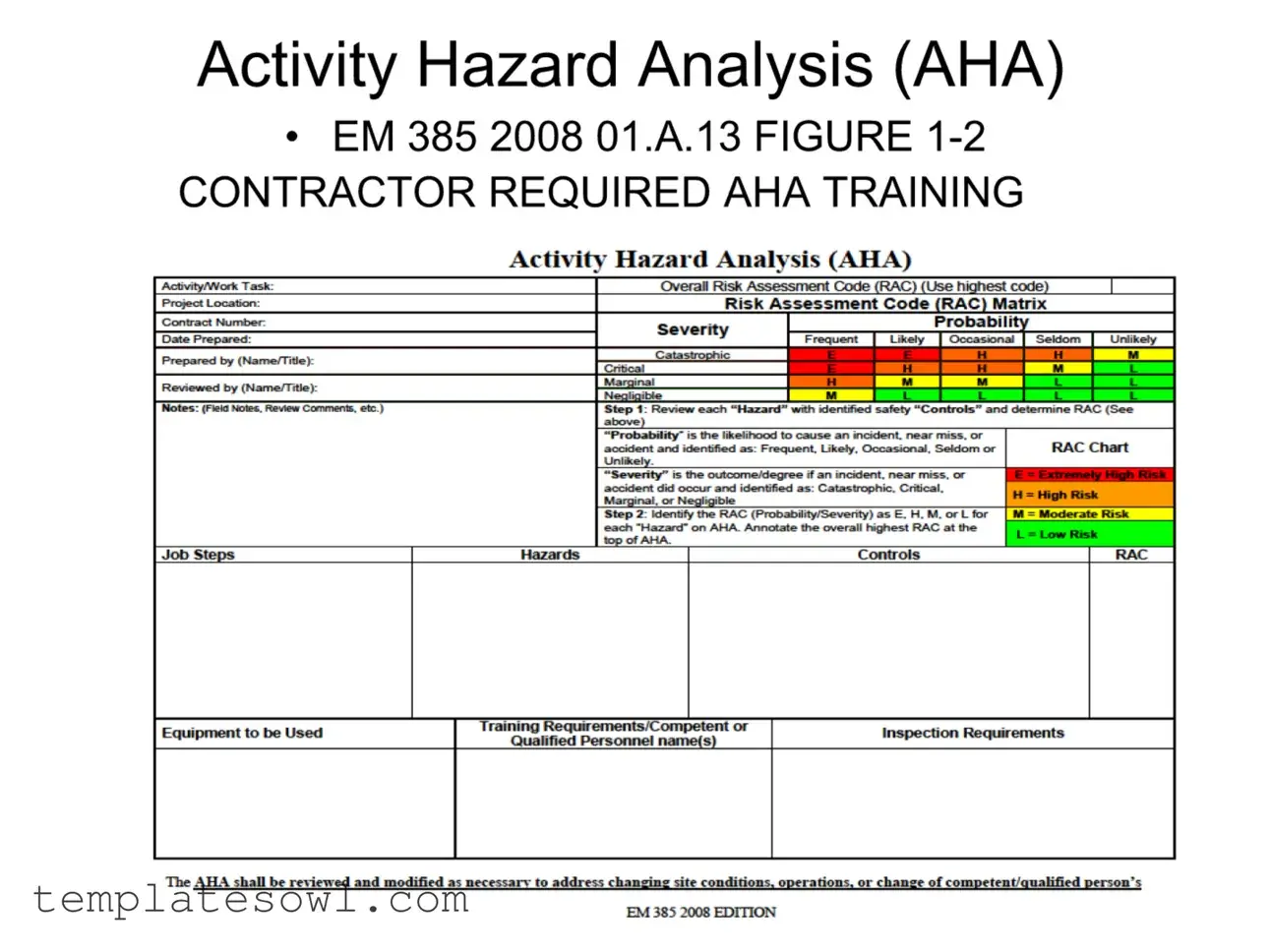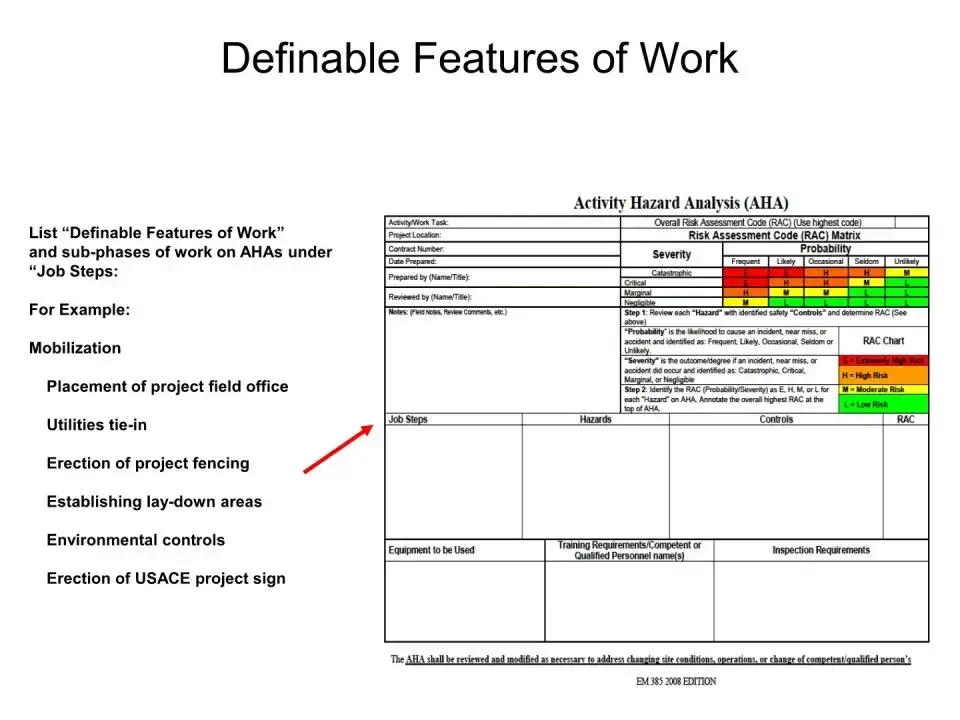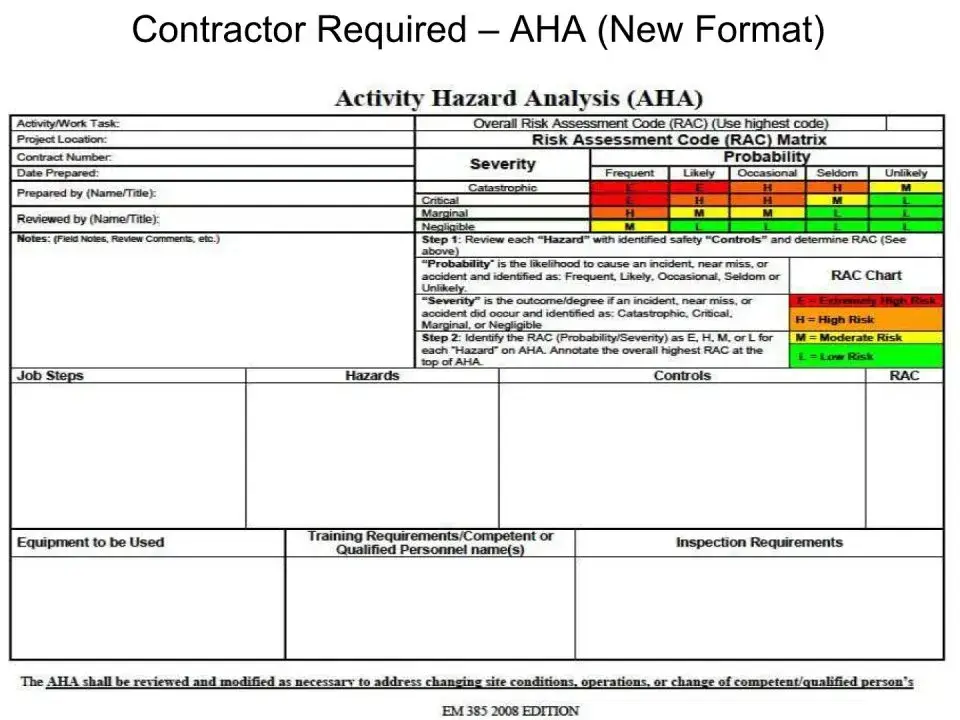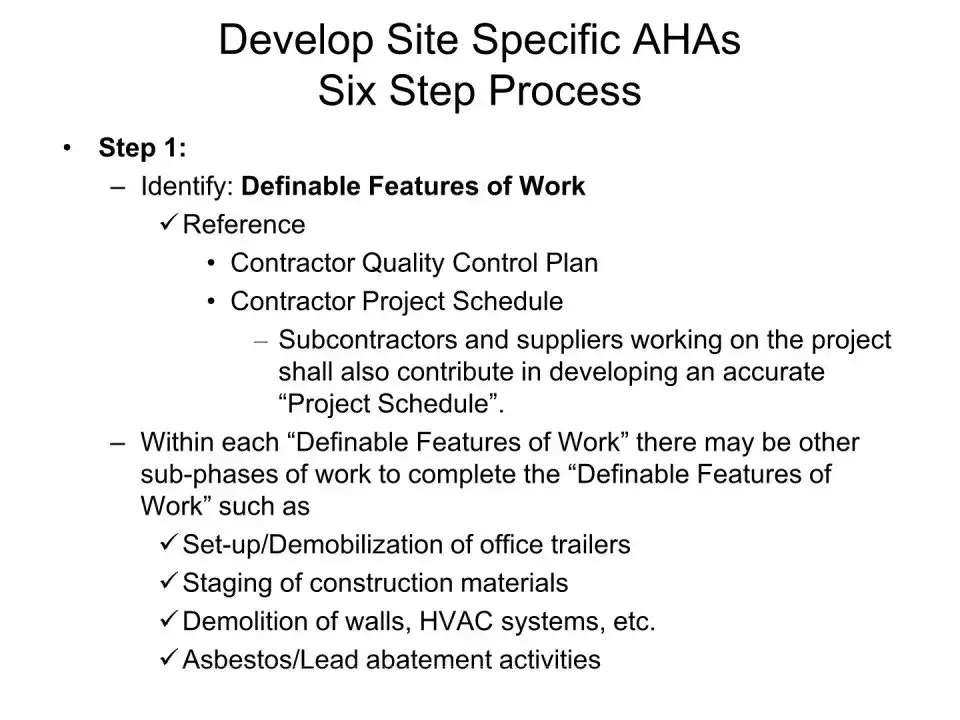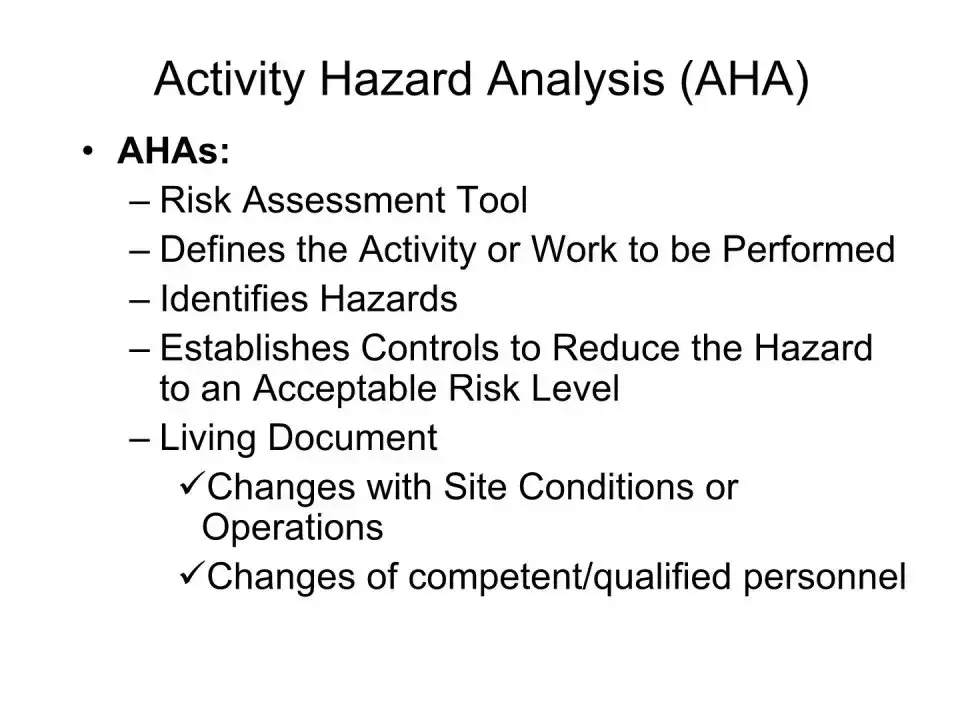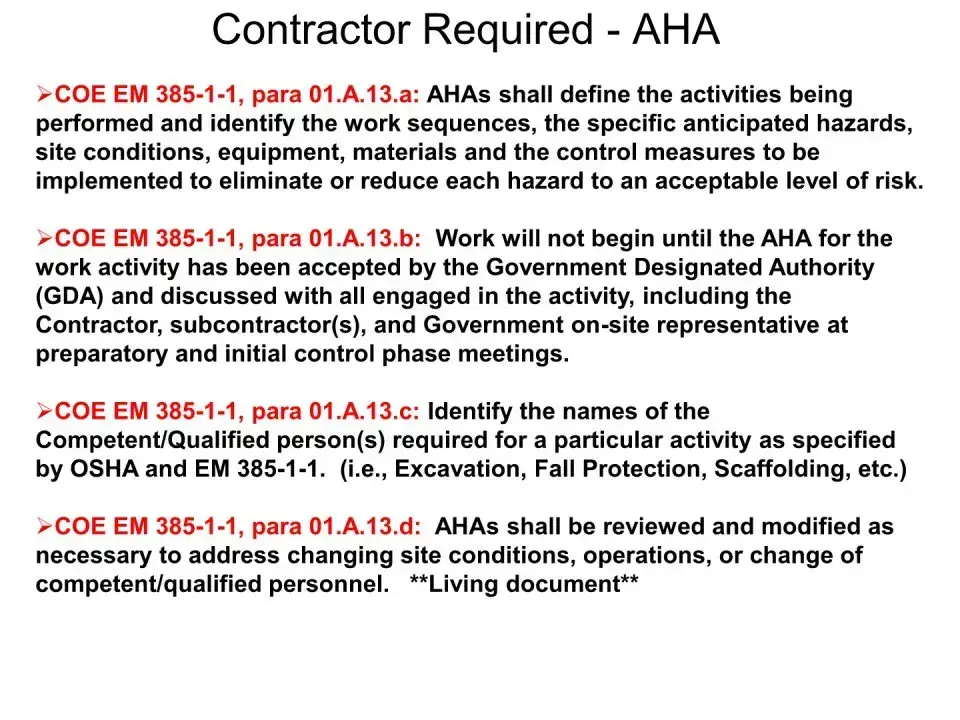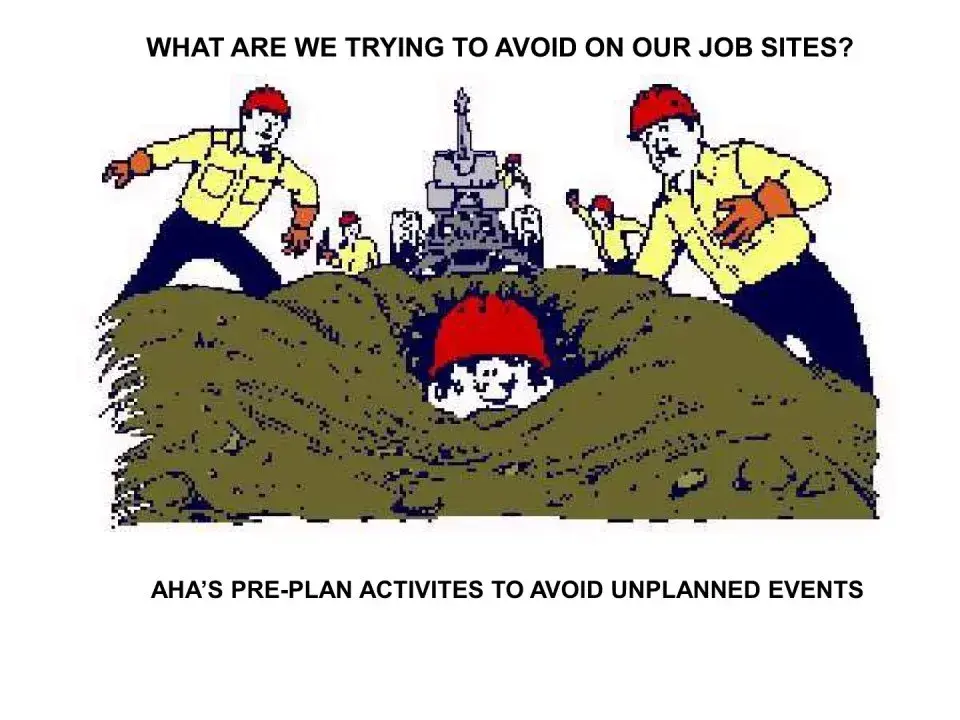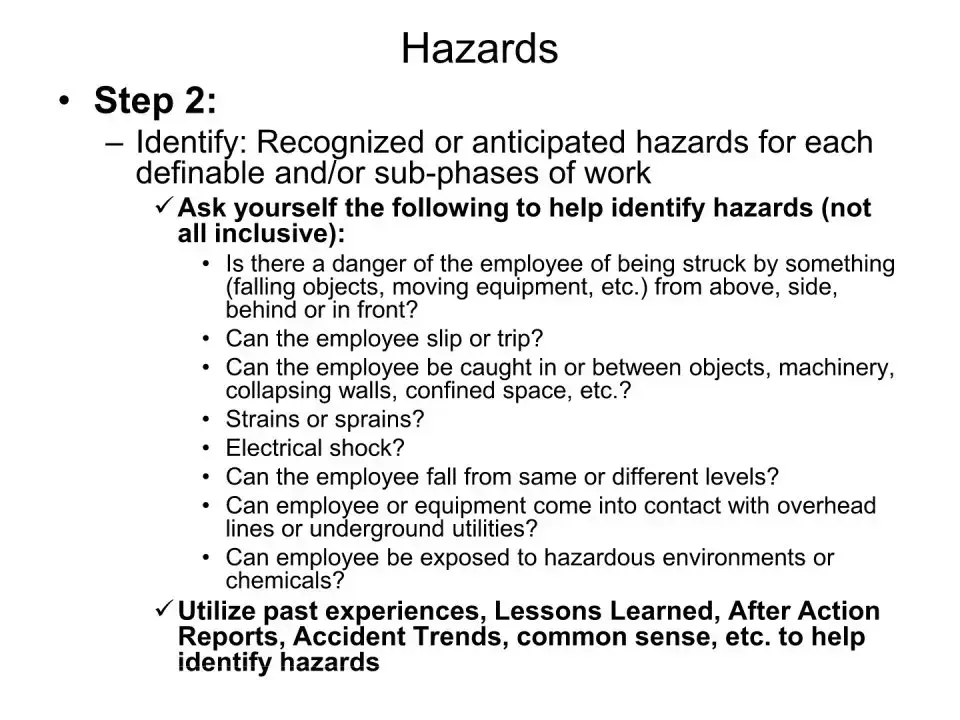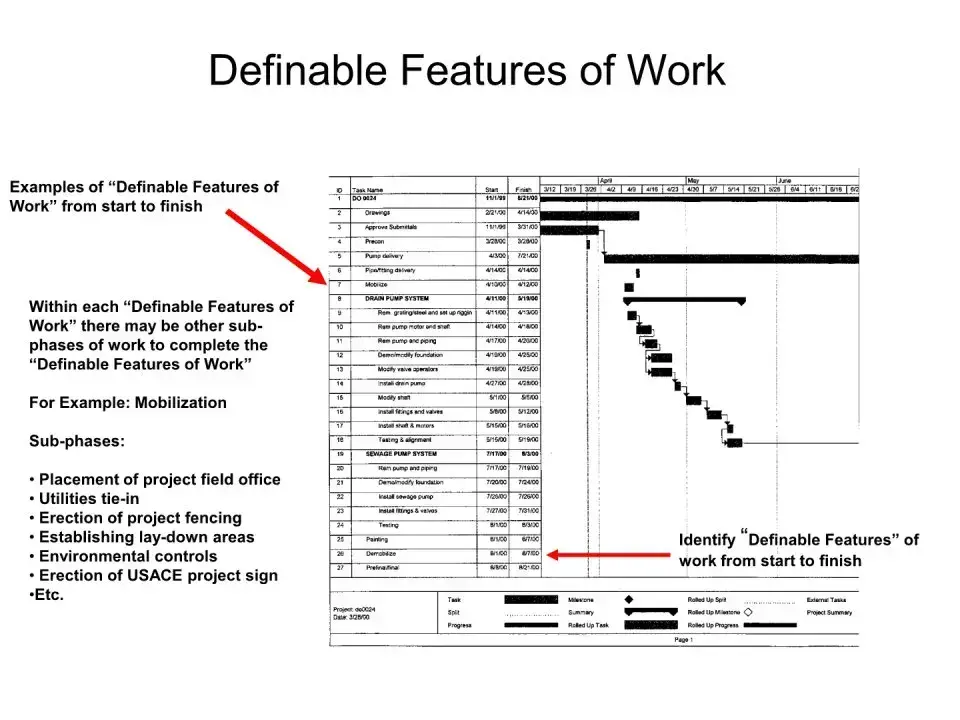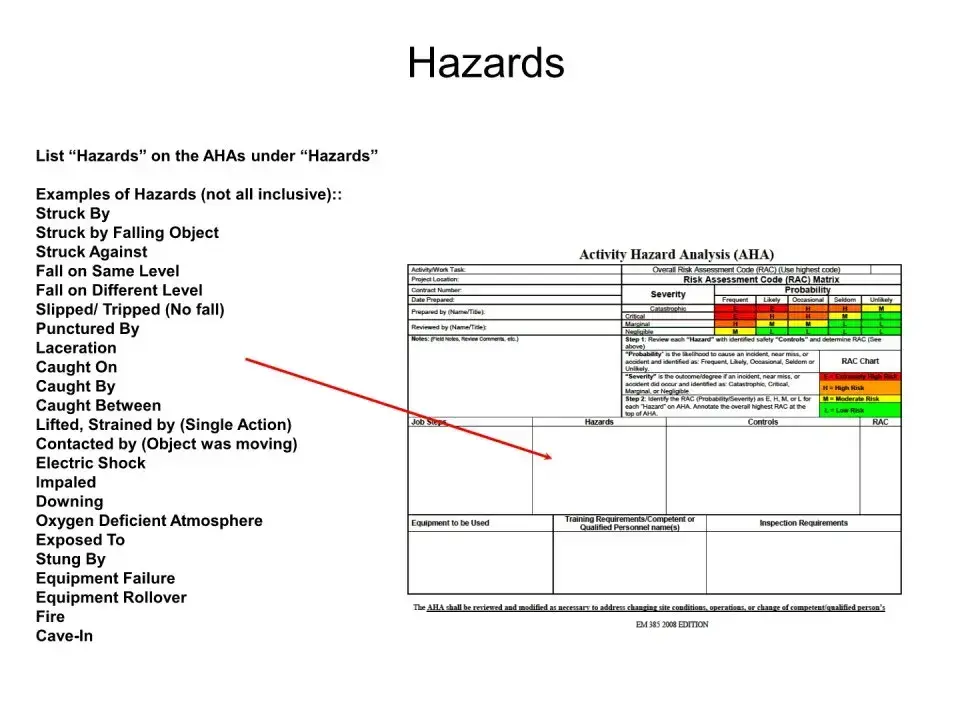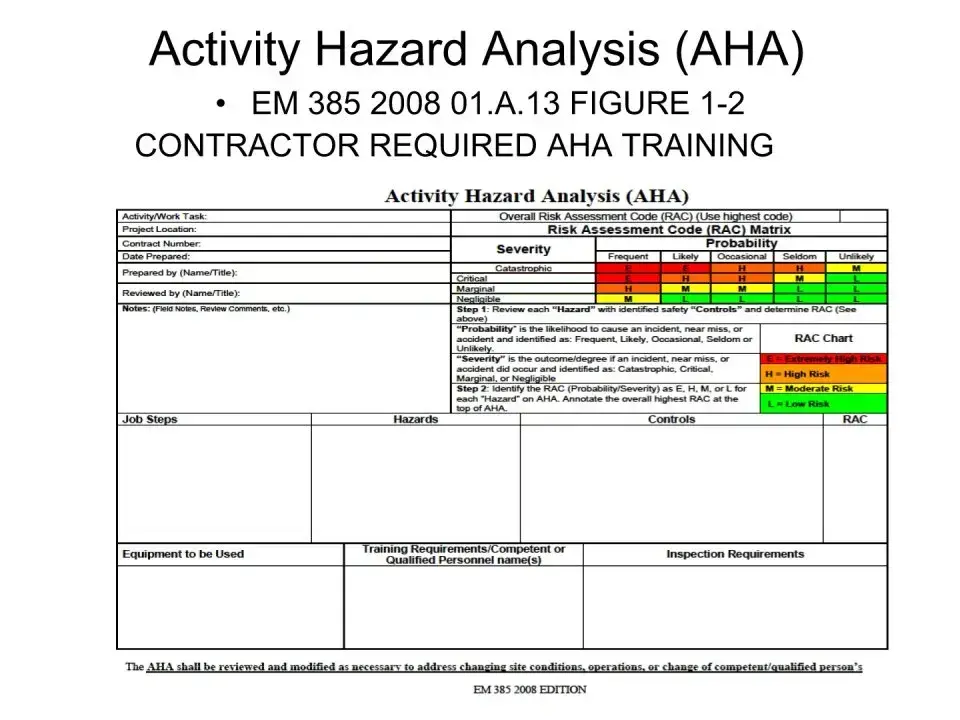What is the AHA EM 385 form?
The AHA EM 385 form is an Activity Hazard Analysis document used primarily in construction and engineering projects. Its purpose is to identify hazards associated with specific work tasks and to outline safety controls to mitigate those risks. This form is essential for ensuring a safe working environment and is mandatory before commencing work on a project.
Why is the AHA important?
The AHA is vital because it helps prevent accidents and injuries on the job site. By assessing risks and establishing controls, it ensures that all personnel are aware of possible hazards and the steps needed to minimize them. It serves as a proactive approach to safety, highlighting the importance of planning and communication within a team.
What are the key components of the AHA EM 385 form?
Key components of the AHA EM 385 form include the Activity/Work Task, Overall Risk Assessment Code (RAC), identification of hazards, safety controls, required equipment, and training requirements. Each hazard must be assessed based on its probability and severity, which will then determine the overall RAC. This comprehensive approach ensures that all aspects of the task are covered.
How is the Risk Assessment Code (RAC) determined?
The RAC is determined by evaluating the probability of an incident occurring and the severity of potential outcomes. Each hazard is rated on a scale that considers how likely an event is to happen and the level of harm it could cause. This rating helps prioritize which hazards need the most attention and control measures.
Who is responsible for completing the AHA?
When should the AHA be reviewed?
The AHA must be reviewed and potentially modified whenever there are changes in site conditions, operations, or personnel. This ensures that the document remains relevant and effective. Regular reviews help maintain safety standards and provide updated information to all team members.
What happens if the AHA is not accepted before work begins?
Work cannot commence until the AHA has been accepted by the Government Designated Authority (GDA). This requirement underscores the significance of having a clear safety plan in place. Starting work without an accepted AHA can result in delays, penalties, or even suspension of the project due to safety compliance issues.
Is the AHA considered a static document?
No, the AHA is not a static document. It is described as a "living document," which means it should evolve based on new information, changes in site conditions, or updates in procedures. Keeping the AHA current is crucial to effectively managing safety on the job site.
How does the AHA contribute to workplace safety culture?
The AHA plays a significant role in fostering a strong safety culture by promoting awareness of hazards and encouraging open communication among workers. When employees are actively engaged in identifying risks and developing solutions, they contribute to a safer work environment. This collaboration not only protects individuals but also enhances overall project efficiency.
